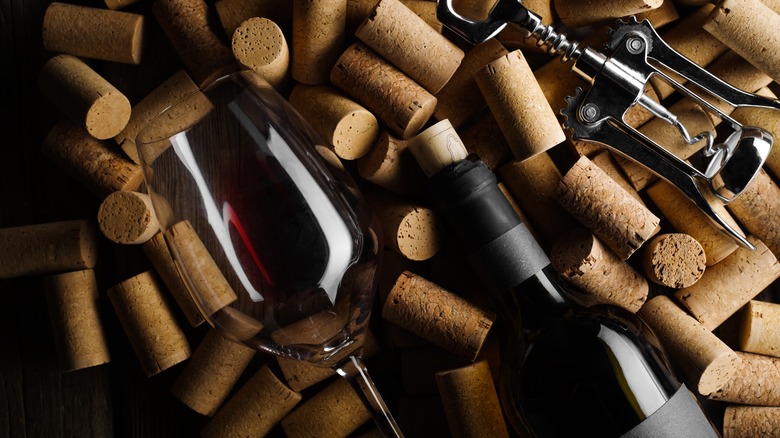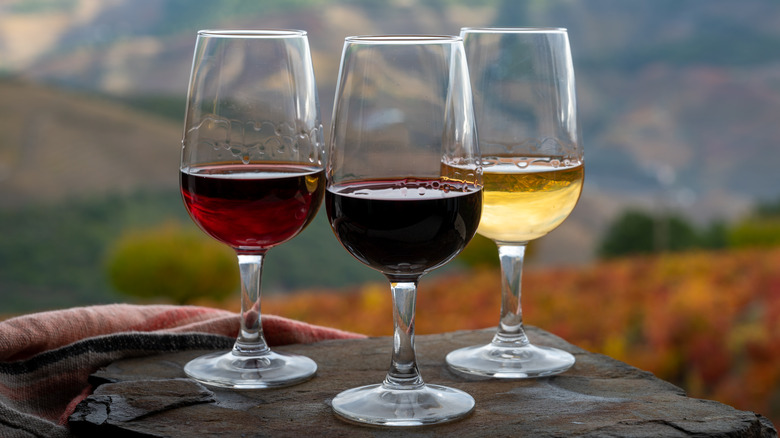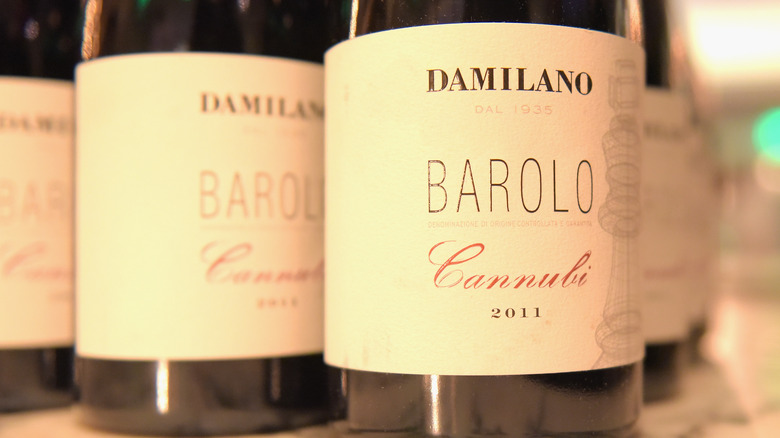This Aromatised Italian Wine Is The Perfect Way To End Dinner
Wine is an alcoholic beverage that has survived and thrived through centuries of war, urbanization, revolution, prohibition, and disease, yet remains just as popular and even more widely enjoyed by the public as it was when it was first spread across Europe by Catholic Monks thousands of years ago (via Second Bottle). There are many of different wine varieties to choose from, and it seems like no matter how prickly your taste buds are, there is a wine out there for you. The trouble is finding it.
Today, Wine Folly lists that France, Spain, Italy, and the United States grow most of the world's wine, but countries all over the globe are now able to produce their own alcohol thanks to changes in climate and advancements in agricultural technology. But since wine was first invented, winemakers have been finding ways to make changes, experimenting with different barrels, acids, and sugars, or by infusing it with other natural ingredients to create unique and intense beverages.
Origins of aromatised wine
Aromatised wine is probably not a term you are closely familiar with unless you grew up around it. Most people have a grasp on what wine is and the process by which it is made through fermented grapes and barrel aging, but what does aromatised mean? The word is rooted in "aromatic" which is to say that something is fragrant. This is a hint at what makes aromatised wine different from standard still wine. The European Commission describes aromatised wine as an alcoholic beverage based on wine, but with sugars, colors, and other added flavors. These include vermouth, sangria, and glühwein, which are most commonly made in Germany, Spain, France, and Italy.
The history of aromatized wines dates back to 9,000 BC (via Australian Bartender). The Ancient Egyptians and Romans were fans of this infused wine because it helpd with digestion and it made low-quality alcohol more pleasant. Tuscany Now & Then states that from there on out, these aromatized wines — also known as digestifs — were commonly used medicinally as health tonics and became regional to Italy.
One of these Italian aromatized wines, famous for its distinct spices, is Barolo Chinato.
What is Barolo Chinato?
Barolo Chinato's wine base is Nebbiolo, a red wine varietal grown in Piedmont, Italy, and noted by Wine Folly for its highly tannic and acidic red fruit notes. According to Serious Eats, Barolo Chinato uses high-quality Nebbiolo wine to make their digestif more complex than vermouth, which is made using generic white wine. The spices, which traditionally are infused with the Nebbiolo, are gentian root, cardamom, clove, and primarily quinine, which comes from the Cinchona officinalis tree and is how Barolo "Chinato" came to be named (via Decanter).
These bitter and savory spices are often mixed with a few other choice picks from the winemaker and are steeped in the wine. Cellar Tours states that because of the premium Nebbiolo used to make this drink, the Barolo Chinato is not only richer and more flavorful than most aromatised wine, but also more expensive. Despite its high dollar value, you should absolutely indulge in the Barolo Chinato as an after-dinner digestif. The quality wine is a delicious way to cap any meal with its smooth, earthy flavors, and digestive benefits.


